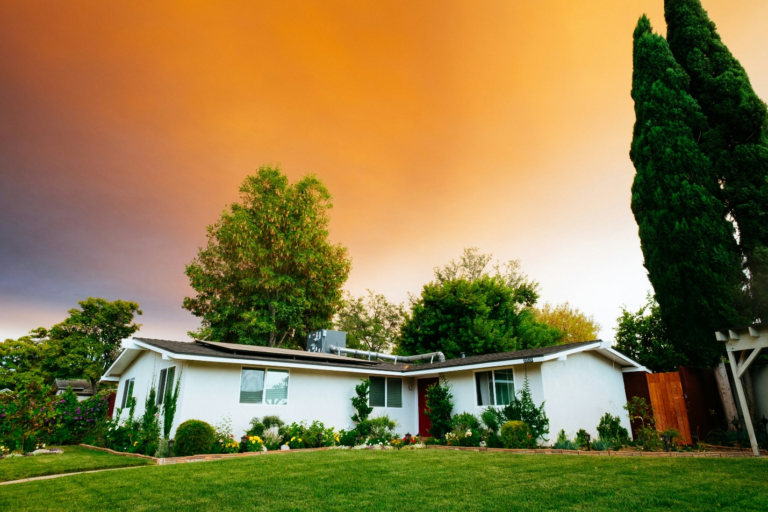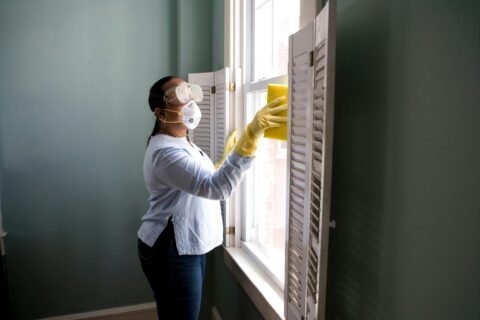In Pasadena, optimizing energy efficiency is crucial not only for reducing utility bills but also for contributing to a greener community. Pasadena’s warm climate makes it particularly important to implement strategies that keep homes cool while minimizing energy consumption. By making simple changes and upgrades, you can significantly lower your carbon footprint and enjoy a more comfortable living environment. This article covers ten practical tips tailored to Pasadena residents to help you enhance your home’s energy efficiency. From sealing drafts to choosing the right appliances, these suggestions will guide you toward a more sustainable lifestyle that benefits both your household and the environment.
Upgrade Your Insulation
Proper insulation is key to maintaining a comfortable temperature in your home without over-relying on heating or cooling systems. Ensure your attic, walls, and floors are well-insulated to prevent energy loss. If you live in an older home, you might need to upgrade the insulation to meet modern standards. Additionally, consider consulting a Pasadena roofing company to inspect your roof’s insulation. Good roofing can make a significant difference in your home’s overall energy efficiency. By improving insulation, you can keep your home warmer in the winter and cooler in the summer, reducing the need for excessive heating and cooling.
Seal Drafts and Leaks
Drafts and air leaks can cause your heating and cooling systems to work overtime, increasing your energy consumption. Inspect your home for drafts around windows, doors, and other openings. Use weatherstripping, caulk, and sealants to close gaps and prevent air from escaping. Pay special attention to the attic and basement, as these areas are often the main culprits for energy loss. Sealing drafts not only enhances your home’s comfort but also significantly reduces your energy bills. Regular maintenance of these seals ensures long-term energy savings and a more comfortable living environment.
Choose Energy-Efficient Windows
Windows play a crucial role in your home’s energy efficiency. Single-pane windows allow heat to escape, while double or triple-pane windows provide better insulation. Consider upgrading to energy-efficient windows that feature low-emissivity (low-E) coatings and gas fills between the panes. These windows reduce heat loss in the winter and keep your home cool in the summer. If new windows are not within your budget, consider adding storm windows or using window films to improve insulation. Properly maintained windows also enhance your home’s aesthetics while contributing to energy savings.
Install a Programmable Thermostat
A programmable thermostat allows you to control your home’s temperature more efficiently. Set your thermostat to lower the temperature when you’re away or asleep and increase it only when you’re home. This simple change can lead to significant energy savings. Smart thermostats take this a step further by learning your schedule and preferences, adjusting the temperature automatically. They can be controlled remotely via smartphone apps, giving you flexibility and control over your home’s climate. By optimizing your heating and cooling schedules, you reduce unnecessary energy use and save on utility bills.
Upgrade to Energy-Efficient Appliances
Appliances account for a significant portion of your home’s energy consumption. When it’s time to replace old appliances, opt for energy-efficient models. Look for the ENERGY STAR label, which indicates the appliance meets strict energy efficiency guidelines set by the EPA. Energy-efficient appliances, such as refrigerators, dishwashers, and washing machines, use less energy and water, reducing your overall consumption. While these appliances may have a higher upfront cost, the long-term savings on your utility bills make them a worthwhile investment. Additionally, energy-efficient appliances often come with advanced features that enhance their performance and convenience.
Switch to LED Lighting
Lighting is another area where you can achieve substantial energy savings. LED bulbs use up to 75% less energy than traditional incandescent bulbs and last significantly longer. Replacing your home’s lighting with LED bulbs can reduce your energy consumption and lower your electricity bills. LEDs come in various colors and brightness levels, allowing you to create the perfect ambiance in any room. They also generate less heat, making them safer to use and reducing the load on your cooling systems. Consider installing dimmer switches to further optimize energy use and create a cozy atmosphere.
Use Smart Power Strips
Electronics and appliances can draw power even when turned off, leading to unnecessary energy consumption. Smart power strips automatically cut power to devices when they’re not in use, preventing “phantom” energy loss. Use these power strips for your entertainment systems, computer setups, and other electronics that are frequently left on standby. This simple switch can make a significant difference in your home’s energy efficiency. Smart power strips are also convenient, allowing you to control multiple devices with a single switch. By reducing standby power consumption, you lower your energy bills and contribute to a greener home.
Harness Natural Light
Maximizing natural light in your home reduces the need for artificial lighting during the day. Arrange your furniture to make the most of windows and skylights, and use light-colored paints and reflective surfaces to enhance the brightness of natural light. Installing skylights or light tubes can bring more daylight into darker areas of your home. Natural light not only saves energy but also improves your mood and productivity. Consider using sheer curtains or lutron blinds uk that allow light to pass through while providing privacy. Embracing natural light can transform your living spaces into brighter, more inviting areas.
Optimize Water Heating
Water heating is one of the largest energy expenses in most homes. Lowering your water heater’s thermostat to 120°F can reduce energy use without compromising comfort. Insulating your water heater and pipes can also prevent heat loss, improving efficiency. Consider upgrading to a tankless water heater, which heats water on demand, eliminating the need for a constantly heated storage tank. Installing low-flow fixtures like showerheads and faucets can further reduce energy and water consumption. Regular maintenance of your water heating system ensures optimal performance and energy savings.
Perform Regular Maintenance
Keeping your home’s systems in good condition is crucial for maintaining energy efficiency. Schedule regular maintenance for your HVAC system, including cleaning filters and checking for leaks. Inspect your home’s insulation, windows, and seals to ensure they remain effective. Regularly service your appliances to keep them running efficiently. Performing these routine checks and maintenance tasks helps prevent energy waste and extends the lifespan of your home’s components. Staying proactive with maintenance can prevent costly repairs and improve your home’s overall efficiency, contributing to a lower carbon footprint.
Conclusion
Enhancing your home’s energy efficiency involves a combination of upgrades, mindful practices, and regular maintenance. By following these tips, you can significantly reduce your carbon footprint and enjoy lower utility bills. From upgrading insulation and windows to using LED lighting and smart power strips, each step contributes to a greener, more sustainable home. Investing in energy-efficient appliances and optimizing your water heating also play crucial roles. By making these changes, you create a comfortable, efficient living space that benefits both the environment and your wallet. Start implementing these energy-saving strategies today and make a positive impact on your home and the planet.





